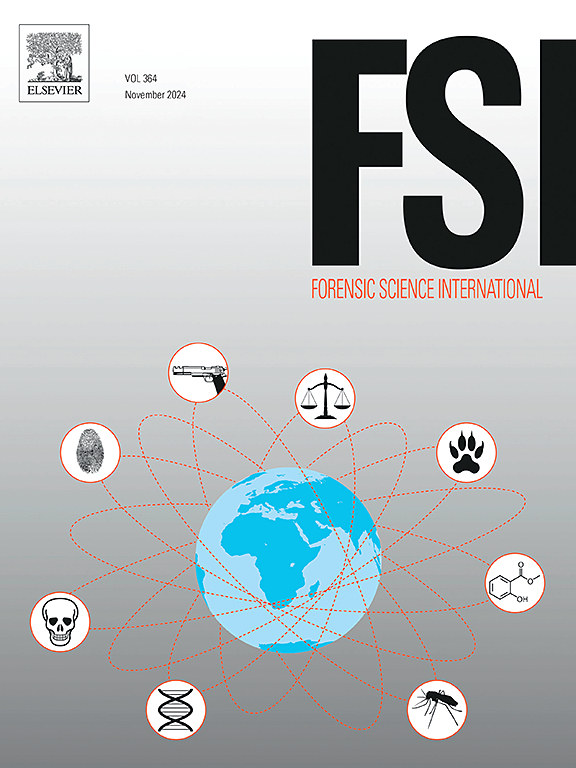A scientometric review of explosives research: Challenges and opportunities
IF 2.2
3区 医学
Q1 MEDICINE, LEGAL
引用次数: 0
Abstract
It is well documented that the amount of scientific literature is increasing annually, leading to increased effort being required to understand the breadth and depth of a field of interest. To address this challenge, a scientometric approach focussing on keyword analysis was used to evaluate explosives evidence in forensic science and identify trends, gaps, and opportunities. Analysis was carried out by examining the references contained in the triennial INTERPOL International Forensic Science Managers Symposium (IFSMS) reports (4665 references) and through a search for “explosive” in the Scopus citation database (70,699 references) to map the research landscape. This study focusses specifically on keyword representation and aims to identify opportunities to improve the searchability and accessibility of future published research. It was found that while analytical techniques are well represented and easily identified in the literature, other research areas such as the recovery of explosive traces are not. Military explosives, especially TNT, are the most referenced explosive compounds within the literature, however, it was challenging to identify literature on specific explosives, as compounds are often not included in searchable fields. To address these limitations, the use of standardised supplementary material is proposed to improve future searchability and discoverability. It is recommended that the explosives community come together to agree the most suitable strategy. This would enable researchers and practitioners to conduct focussed literature searching and develop a deep understanding across the field of explosives research.
炸药研究的科学计量学综述:挑战与机遇
有充分的证据表明,科学文献的数量每年都在增加,这导致需要更多的努力来理解感兴趣领域的广度和深度。为了应对这一挑战,我们采用了一种以关键字分析为重点的科学计量学方法来评估法医科学中的爆炸物证据,并确定趋势、差距和机会。通过检查国际刑警组织国际法医学管理人员研讨会(IFSMS)三年期报告中的参考文献(4665篇参考文献)和通过在Scopus引文数据库中搜索“爆炸性”(70,699篇参考文献)来绘制研究格局,进行了分析。本研究特别关注关键字表示,旨在确定提高未来发表研究的可搜索性和可访问性的机会。研究发现,虽然分析技术在文献中有很好的代表性和容易识别,但其他研究领域,如爆炸痕迹的恢复,却没有得到很好的体现。军用炸药,尤其是TNT,是文献中引用最多的爆炸性化合物,然而,由于化合物通常不包括在可搜索字段中,因此确定关于特定炸药的文献是具有挑战性的。为了解决这些限制,建议使用标准化的补充材料,以提高未来的可搜索性和可发现性。建议炸药界聚在一起商定最合适的策略。这将使研究人员和从业人员能够进行有针对性的文献检索,并对炸药研究领域进行深入了解。
本文章由计算机程序翻译,如有差异,请以英文原文为准。
求助全文
约1分钟内获得全文
求助全文
来源期刊

Forensic science international
医学-医学:法
CiteScore
5.00
自引率
9.10%
发文量
285
审稿时长
49 days
期刊介绍:
Forensic Science International is the flagship journal in the prestigious Forensic Science International family, publishing the most innovative, cutting-edge, and influential contributions across the forensic sciences. Fields include: forensic pathology and histochemistry, chemistry, biochemistry and toxicology, biology, serology, odontology, psychiatry, anthropology, digital forensics, the physical sciences, firearms, and document examination, as well as investigations of value to public health in its broadest sense, and the important marginal area where science and medicine interact with the law.
The journal publishes:
Case Reports
Commentaries
Letters to the Editor
Original Research Papers (Regular Papers)
Rapid Communications
Review Articles
Technical Notes.
 求助内容:
求助内容: 应助结果提醒方式:
应助结果提醒方式:


